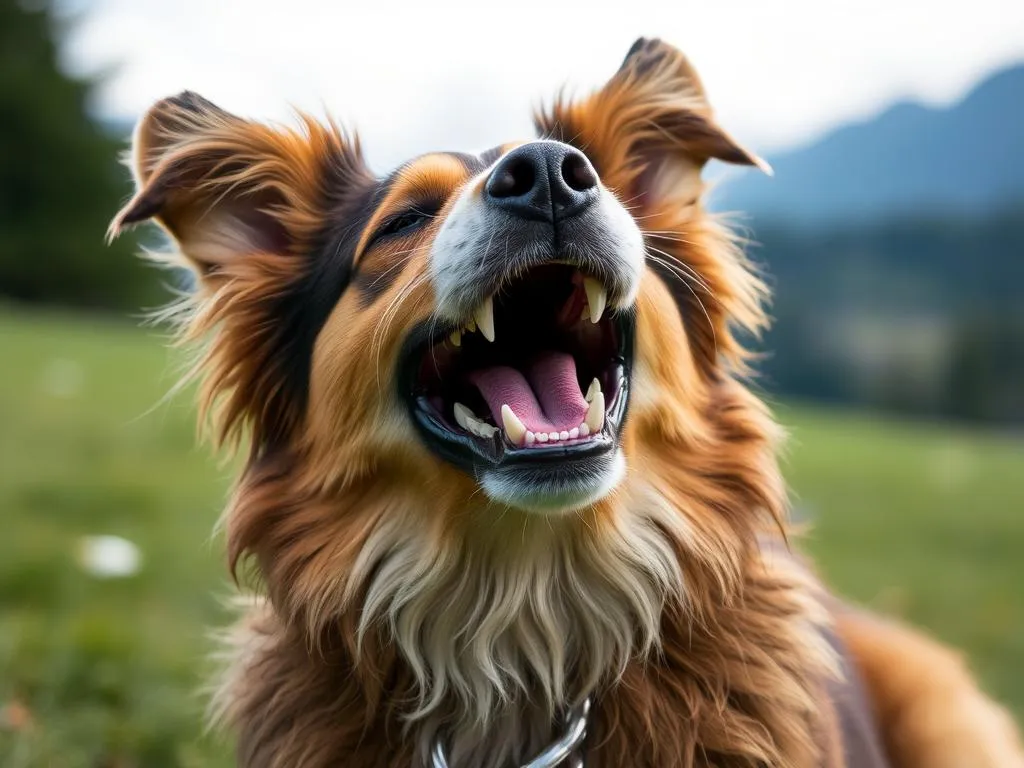
Introduction
Dog behavior is a fascinating subject that reveals much about how our furry friends communicate with us and their environment. One of the most perplexing forms of communication is growling. Understanding growling can significantly enhance our relationship with our dogs. It’s essential to recognize that growling is not always a precursor to aggression; in fact, it often serves various communicative purposes.
This article aims to address the question: “Why does my dog growl when I pet him?” We will explore the nature of growling, the reasons behind it, how to assess your dog’s behavior, and ways to manage and prevent growling.
Understanding Dog Growling
What is Growling?
Growling is a vocalization made by dogs that can convey a wide range of emotions. It is typically characterized by a low, rumbling sound. Dogs can growl for many reasons, and not all growling is negative. There are various types of growls, including:
- Playful Growling: Often heard during playtime, signaling excitement and engagement.
- Warning Growling: A sign that the dog feels threatened or uncomfortable, indicating a need for space.
- Fearful Growling: A response to perceived danger, showing that the dog is anxious or scared.
The Purpose of Growling
Growling serves as a critical form of communication for dogs. It can indicate a variety of feelings, including:
- Warning: Alerting others to potential danger.
- Expression of Emotion: Conveying excitement, fear, or frustration.
- Establishing Boundaries: Signaling that the dog wants to be left alone.
Understanding these nuances is vital for dog owners to interpret their pet’s feelings effectively.
Common Misconceptions About Growling
Many people believe that growling is solely an indicator of aggression, which is a misconception. While some growls can indeed indicate aggression, many are harmless and serve other purposes. It’s essential to differentiate between growling and other vocalizations, such as whining or barking, which may indicate different emotional states.
Reasons Why Dogs Growl When Petted
Fear and Anxiety
One primary reason a dog may growl when petted is due to fear or anxiety. A dog that feels threatened may respond defensively by growling. Signs that your dog may be fearful include:
- Cowering or hiding
- Ears pinned back
- Tail tucked between the legs
Recognizing these signs can help owners understand their dog’s emotional state and respond appropriately.
Pain or Discomfort
Another reason for growling during petting can be pain or discomfort. If a dog is experiencing physical pain, they may growl to signal that they do not want to be touched in certain areas. Body language indicating pain might include:
- Whining or whimpering
- Flinching when touched
- Licking or biting at a specific area
If you suspect your dog is growling due to pain, it’s crucial to consult a veterinarian to rule out any underlying health issues.
Territorial Behavior
Dogs are naturally territorial animals. If a dog growls when being petted, it may be expressing territorial instincts, especially if the petting occurs in a space they consider their own. Situations that may trigger this behavior include:
- Petting while the dog is resting in their bed or favorite spot
- Approaching the dog during meal times
Understanding these triggers can help owners manage their dog’s environment to reduce growling.
Overstimulation
Overstimulation is another reason for growling. Dogs can become overly excited or stimulated, leading them to growl as a way of expressing that they’ve had enough. Signs of overstimulation may include:
- Rapid tail wagging
- Excessive panting
- Hyperactive behavior
Recognizing the signs of overstimulation allows owners to intervene before the growling escalates.
Playful Growling
Lastly, dogs may growl during play as a sign of excitement and engagement. This type of growling is usually accompanied by other playful behaviors, such as:
- Jumping or bouncing around
- Wagging tail
- Play bows
Differentiating between playful growling and aggressive growling is crucial for maintaining a positive play environment.
Assessing Your Dog’s Behavior
Reading Body Language
Understanding your dog’s body language is essential for interpreting their growling. Key signals to look for include:
- Ears: Forward-facing ears may indicate curiosity, while pinned-back ears suggest fear.
- Tail: A wagging tail can show excitement, but a stiff or low-held tail may indicate discomfort.
- Posture: A relaxed posture signifies comfort, whereas a stiff, tense stance can suggest anxiety.
Context Matters
The context in which growling occurs significantly influences its meaning. Factors to consider include:
- The environment (e.g., home vs. public spaces)
- The presence of other animals or people
- The dog’s previous experiences in similar situations
For instance, if your dog growls when being petted by a stranger, it may indicate discomfort rather than aggression.
Consulting with Professionals
If you’re unsure about your dog’s growling behavior, seeking help from a veterinarian or dog behaviorist can provide clarity. A professional assessment can help identify underlying issues and offer tailored solutions for your dog’s specific needs.
What to Do if Your Dog Growls
Stay Calm and Assess the Situation
When your dog growls, it’s vital to remain calm. Reacting with fear or anger can escalate the situation. Instead, take a moment to assess what may be causing the growling and how to address it without increasing tension.
Modify Interactions
Changing how you interact with your dog can help reduce growling. Consider implementing gradual desensitization techniques, such as:
- Approaching your dog slowly and speaking softly.
- Offering treats to create positive associations with petting.
- Allowing your dog to initiate contact when they feel comfortable.
Training Techniques
Positive reinforcement training can effectively reduce unwanted growling behavior. Techniques to consider include:
- Rewarding your dog for calm behavior during petting.
- Teaching commands such as “leave it” or “quiet” to redirect their focus.
- Engaging in regular training sessions to enhance your dog’s obedience and self-control.
Seeking Professional Help
If growling persists or escalates, finding a qualified trainer or behaviorist is essential. Professionals can provide structured training plans and behavioral modification strategies tailored to your dog’s needs.
Preventing Future Growling
Building Trust and Confidence
Building trust with your dog is crucial for reducing growling. Techniques to enhance your bond include:
- Spending quality time together through walks and play.
- Offering praise and rewards for positive behavior.
- Creating a secure and comfortable environment for your dog.
Socialization
Socializing your dog with different people and animals is vital in preventing growling. Positive experiences can help your dog feel more comfortable in various settings. Activities that promote socialization include:
- Attending dog training classes
- Organizing playdates with other dogs
- Visiting dog parks to expose your dog to new experiences
Regular Vet Checkups
Regular veterinary checkups are essential for maintaining your dog’s health and preventing pain-related growling. Keeping up with vaccinations, dental care, and wellness checks can help identify health issues before they become significant problems.
Conclusion
In summary, understanding why your dog growls when petted is crucial for fostering a healthy relationship with your furry friend. By recognizing the various reasons behind growling, assessing your dog’s behavior, and implementing appropriate strategies, you can create a more harmonious environment for both you and your dog. Observing your dog’s unique communication style, practicing patience, and considering professional guidance when necessary will lead to a deeper bond and a more fulfilling companionship.
Understanding your dog’s behavior is an ongoing journey, and with time, you will learn to interpret their signals accurately, ensuring a happy and healthy relationship.









